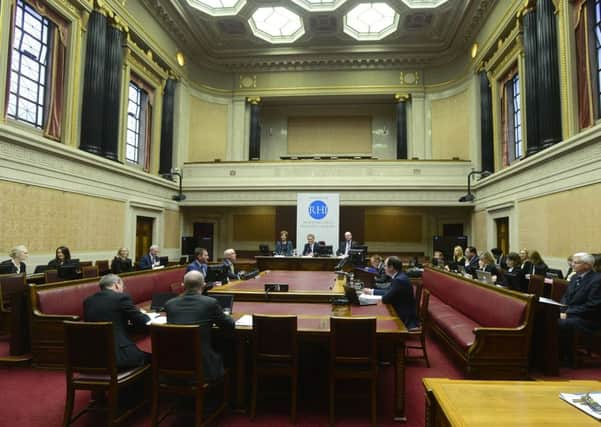Forensic work to examine devices revealed at first day of RHI inquiry


The revelation was made today as the public inquiry chaired by retired Appeal Court judge Sir Patrick Coghlin began its first oral hearings in Stormont, some nine months after it was established.
In hints at the nature and significance of the more than one million pages of documentary evidence which it has gathered, counsel for the inquiry referred to the fact that it had asked forensic experts to examine the electronic devices of some key figures.
Advertisement
Hide AdAdvertisement
Hide AdThe inquiry also heard that one of the many key decisions about the setting up of the scheme – the decision that it should be in the form of an incentive, rather than a grant – was taken personally by the then minister, Arlene Foster, after her officials presented her with a submission which did not make a clear recommendation.
The minutes of the meeting where that decision was taken did not make clear the reasoning behind adopting that course of action, the inquiry was told.
Counsel for the inquiry, David Scoffield QC, began a lengthy opening statement which is expected to last most of this week.
In it, he addressed the background to the scandal, how in a perverse incentive to use more heat the supposedly environmentally friendly scheme had paid out more money in subsidies than the cost of the fuel which participants were putting into their boilers and how it had ultimately been a significant contributing factor in the collapse of devolved government in Northern Ireland in January.
Advertisement
Hide AdAdvertisement
Hide AdAs he set out the chronology of the scheme, however, Mr Scoffield interwove it with references to some of the previously unseen evidence which the inquiry now has in its possession.
He said that the inquiry had been given access to archived civil service email accounts, some civil service phone records and electronic devices for forensic investigation.
The scope of its evidence-gathering was such, he said, that evidence about the way in which government runs in Northern Ireland which would never have been released will now be made public through the inquiry.
The inquiry was played clips from both the BBC Spotlight exposé which brought the scandal to wider public prominence and then the Stephen Nolan interview with Jonathan Bell in which the former DUP minister turned on his party, alleging that senior party figures had stopped him from introducing cost controls when they knew the scheme was running out of control, claims which they denied.
Advertisement
Hide AdAdvertisement
Hide AdMr Scoffield said that the inquiry now had obtained text messages and emails between political figures and civil servants at that time in which they discussed Mr Bell’s dramatic claims and “as the fallout from the interview began to be managed”.
Using more than 500 legal notices which compelled the production of documentary evidence, the inquiry, Mr Scoffield said, that in cases where the inquiry had not secured such messages, it had obtained “written confirmation of how they communicated with others in relation to the scheme”.
Mr Scoffield also said that the inquiry now has 200 substantive witness statements, some of which are “extremely lengthy” and that there “are instances where individuals within an organisation are expressly or impliedly critical of each other”.